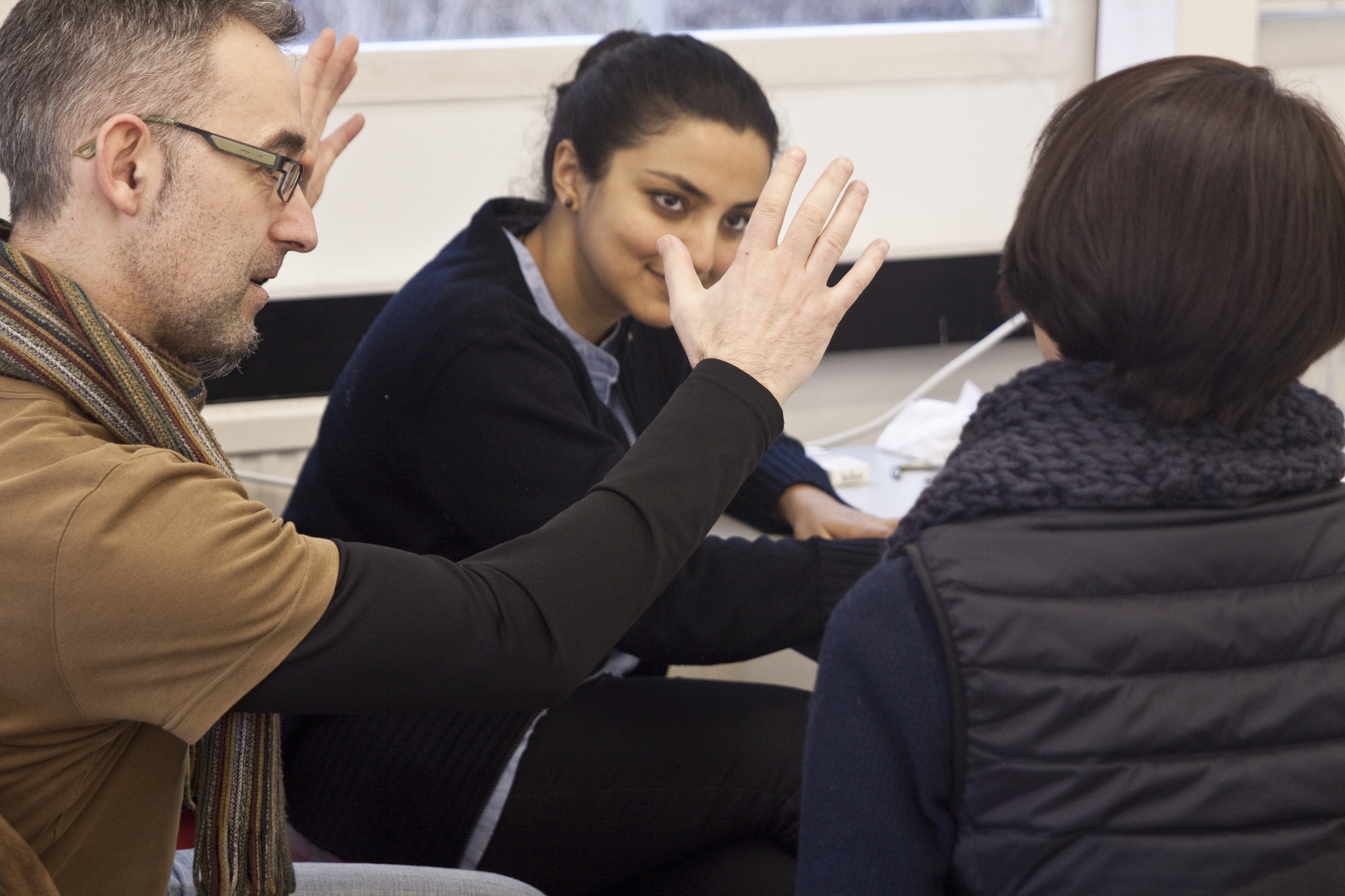Along with my good friend Julian Moncada, we held a 4-day workshop for students of Reading’s MATD programme. Students worked on team projects to create a system of typefaces for fictional clients. We gave them some background info on each client, and set out what the typefaces would be used for. It was then up to the teams to decide on the creative direction, the number of typefaces needed, and the allocation of work among themselves. Continue reading
Tag Archives: MATD
The MA ends
Our fantastic year at Reading is now complete, and the class of 2012 has dispersed to make way for the incoming students — a talented looking bunch judging by some of the websites I’ve seen. Continue reading
The Paradigm of the Stroke
Recently, we were visited by Will Hill, ex-Reading student and now Senior Lecturer in Graphic Design at Anglia Ruskin University. His lecture touched upon something that’s been bothering me for some time… Continue reading
Whence originality?
David Březina () came to visit us last week, to talk through his career in type design and his award-winning, multi-script foundry, Rosetta, to critique our typefaces, and to ask us an impossible question. What he wanted to know was how we plan to create original work in our typeface design careers over the next ten years. A ten-year plan is not something I’d naturally sit down and think about, so it certainly struck me as an intriguing question. How on earth can I set about planning my long-term creativity? It was the kind of meta question that demands you take several steps back from the process itself and consider how one approaches one’s approach. Continue reading
It’s May already!
The year has flown past at an alarming speed — not that it’s over yet, but as our project deadlines are in June, it feels like we’re very much in the final stretch. After our fantastic field trip to Antwerp, Amsterdam, the Hague, Haarlem and Bussum, the Easter break gave us some much needed breathing room to get down to some serious business with FontLab. Continue reading
Finally, Burmese begins to click
Our Spring term has flown by, and progress on my typeface was honestly a bit disappointing. Perhaps I tried to tackle too many things and ended up spreading things a bit thin with unresolved attempts at Greek and Thai, or perhaps it was the packed timetable of workshops, visiting lecturers and assessment deadlines, but I was expecting to have achieved more by the end of term. I was especially unhappy that I didn’t have very much new stuff to show Gerard in his two visits of the term, as I’d been focussing on the non-Latin designs rather than bold, italic or sans fonts I’m also trying to develop. On the plus side, however, my Latin lowercase in the regular weight is now accomplished, including most of the spacing, so I’m freezing that now to work on the caps and Burmese. Continue reading
AFDKO Workshop. Caution: geeky.
The Adobe Font Development Kit for OpenType (AFDKO or simply FDK) is a set of command line tools that Adobe makes freely available for font developers to help with production and testing. If, like me, you’ve struggled with FontLab’s glitches only to end up with incompatible font names, duplicate encodings or extra features you didn’t write, FDK seems like a better way to do things. Unlike glyph-editing software like FontLab, Fontographer, Glyphs or DTL BezierMaster, the FDK’s strength is in directly wrangling your fonts’ behind-the-scenes properties, such as naming and compiling extensive font families (especially from multiple masters), scripting the OpenType code that FontLab can’t manage, and comparing stem widths to expedite hinting. Continue reading
The typographic tradition in non-Latin scripts
In Europe, the various strands of typography came together over centuries. Even before the arrival of printing, there were many styles (and sub-styles) of writing: the Greek and Roman inscriptional capitals and everyday ‘rustic’ letters, the Carolingian and insular uncials, and the textura and rotunda gothics to name only a few key elements. Printing types started in the fifteenth century by mimicking the forms of handwritten letters, and thenceforth, developments in type included bicameralism (including upper- and lowercase versions of letters in one typeface), the integration of uprights with italics, and the gradual movement away from humanist models to the elegant swelling lines of the “modern’ types. Later we see the introduction of sans-serif faces, and the invention of the fat, poster faces that gave us our bolds. Continue reading
Designing the design
There’s a phrase that pops up from time to time in the department; it’s probably a Gerry-ism. ‘Designing the design’.
My take on it is that before we start drawing letterforms and thinking about details like what style of serifs we’d like, there’s the important matter of how the thing should look holistically. Can I visualise the rhythm and texture on the page, the way the letters perform together? Am I aiming for a particular mood and tone? What connotations and atmospheric values would I like to suggest? Continue reading
On multidimensional balancing acts
I decided to take advantage of Gerard’s third visit of the year to finalise the relationship between my Latin serif and sans serif designs. Several people had remarked that the sans was looking too skinny, too small or too light, but I wasn’t really sure whether fixing it meant stretching the thing or redrawing completely. In the end it was an illuminating and actually quite easy process, despite the many dimensions at play. Continue reading
